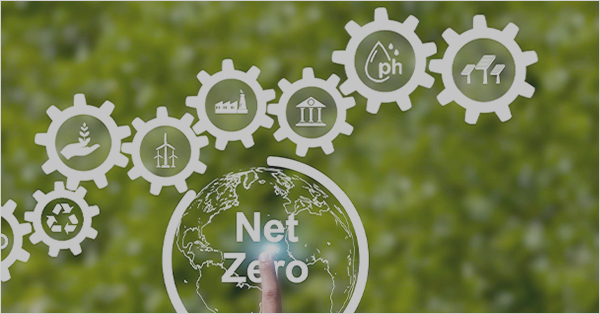
Despite their short history, Sovereign Thematic Bonds have emerged as an interesting opportunity for Latin America and Caribbean (LAC) countries to efficiently channel domestic and international capital markets towards sustainable investments. While countries are trying to finance their recovery efforts and also take advantage of the increased interest for responsible and sustainable investments, treasurers of the region have increasingly looked at sustainable bonds as an opportunity to access domestic and international markets and to channel capital towards the estimated investment opportunity of more than $1 trillion in a green recovery. Green bond issuance in the LAC region more than doubled in less than two years, from US $13.6 bn in September 2019 to US $30.2 bn at the end of June 2021. For social and sustainability bonds, the growth is even more remarkable with US $18.3 bn in cumulative issuance since the inception of this market segment in 2016. Despite the impact of the COVID-19 pandemic, the LAC sustainable debt market continued to soar throughout 2020 and 2021 across all main themes.
IDB’s unconditional support
The IDB has been a pioneer in its support of this market since its first bonds in 2016. It has developed a program that includes technical assistance to prospective public sector issuers, with a total of 46 thematic bonds supported so far, capacity building and knowledge dissemination. In addition to this, the Green Bond Transparency Platform, aims to make available to investors and the market impact indicators for all the green bonds issued in the region. Since 2018, through the NDC Accelerator Multidonor Trust Fund, the IDB has helped sovereign issuers to identify green and social expenditures in their budgets, create governance mechanisms to develop and manage sovereign sustainable programs and then supporting treasurers in the preparation of framework documents, in obtaining second party opinions and certifications, and in issuing the bonds on international and domestic markers. These efforts have resulted in more than US$30 billion issued across green, social and sustainability bonds.
As well as this, IDB’s Green Bond Transparency Platform, is a key tool for issuers and investors to support the harmonization and standardization of green bond reporting and to analyze the proceeds and environmental performance.
The Case of the Region, Examples of Latin American Countries
The successful issuance of sovereign thematic bonds in the LAC region is driven by the important benefits this instrument brings to the countries. Amongst them: diversification of the investors’ base, the direct mobilization of investment capitals towards green and sustainable activities, and the support for the creation of sustainable capital markets. Public sector issuers together account for about 30% of the total green bond issuance, with a dominant role for sovereign issuers in both green and social categories. A total of six countries have successfully issued thematic bonds in the region. We must highlight two examples of sovereign issuances that allow us to shed some light on the value-added these bonds can bring to LAC public debt managers and treasurers. Mostly due to their complementarity to conventional bonds and innovation to attract foreign investors in domestic markets.
One of them is the case of Chile. Since its inaugural issuance in 2019, this country quickly became the largest issuer of sustainable bonds in the region with a cumulative volume of around US $36 billion in green, social, sustainable, and sustainability-linked bonds. More importantly, now Chile’s sustainable bonds represent a quarter of the total outstanding bonds for the country – highlighting how thematic bonds are a core financing instrument for this issuer. Furthermore, with the issuance of the first (globally) Sovereign Sustainability Linked Bond (SLB) in March 2022, Chile showed that sustainable bonds could monetize not just sustainable public expenditure and infrastructure but can also be instrumental in monetizing sustainable policies and national commitments –such as the Nationally Determined Contribution (NDC) set by the country under the Paris Agreement.
Another key example is Colombia, that issued their first sovereign green bond in September 2021, with a repeated issuance in October 2021 and another in June 2022. Differently from many emerging countries, Colombia did issue its sovereign green bonds in the domestic market (called Green TES) through a modality called twin issuance with conventional bonds (TES). This mechanism was chosen to promote both the growth of the nascent sustainable investment industry in the country, as well as to increase the presence of foreign investors in the country. The first issuance saw indeed the participation of foreign investors (by raising US $200 million) in the green issuance approximately more than two times compared to the conventional bond. Colombia also a received special international recognition for this instrument and received the Green Bond of the Year Award by Environmental Finance.
Thanks to the favorable market conditions and the low-interest rates, sustainable markets have grown in size and relevance, going from niche to the mainstream. Now questions arise on how they will perform in a more volatile environment like the one seen in the last few months. On the issuance side, the evidence so far has been mixed, with transaction volumes from emerging market issuers still trending higher despite those in developed economies decreasing slightly. Interestingly, market volatility could provide unprecedented insights into green bonds’ resilience to market shocks. For LAC, Colombia Green TES seems to indicate that the greenium (the rate differential over a comparable conventional bond) has been rising from an average of 9.8 basis points over the last 10 months to the 33 basis points observed in the more volatile markets of May 2022.
Understanding the Determinants of Sustainable Bonds: A Call for Proposals
More research is needed to understand the determinants of sustainable bonds’ greenium in emerging markets and the investors’ preferences that drive its evolution. In this sense, the IDB launched a call for proposals the summer of 2022 to gather evidence and create academic knowledge on the variables driving sustainable bond markets, especially on pricing and issuance volume, that will be presented in a workshop at the end of the year – please check this link for more information.







 Stay updated on the latest trends of Green Finance
Stay updated on the latest trends of Green Finance


